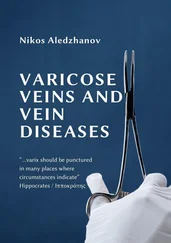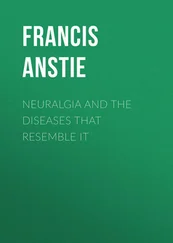E-mail: books@asmusa.org
Online: http://www.asmscience.org
For Lynn, whose idea this book was .
Peter
To those who have taught me in the areas of infectious diseases and clinical microbiology .
Dan
For my family, who endured many hours of my writing at home .
Melissa
We would like to thank Claire Kendig for updating the excellent glossary originally compiled by Charles Upchurch, Susan Gibbs, and Paul Walden. She added over 350 new terms for this edition. Many people at UNC Hospitals gathered clinical information and material for us, especially Alan Kerr, Melissa Jones, Amy Sweeney, Sonia Allen, and Eric Weimer. We thank several people who took original photographs, including Billy Williams, Kevin Alby, Vincent Moylan, and Anthony Tran.
We are grateful for the generosity of many people who supplied cases for this edition of the book. We particularly would like to thank Natalie Bowman and Christopher Lippincott for providing specific cases seen during their fellowship. We also thank colleagues at other institutions who supplied images and cases, especially Joan Barenfanger for the Ehrlichia photos; Lynne Garcia for the Trichomonas and Giardia figures; Krishnan Parayth for the photos of the coccidioidomycosis patient; Thomas Treadwell for the dengue case and selected patient photos; Charles Krasner for the syphilis case; and Svetlana Shalfeeva for the hantavirus case. We thank Alison Holmes and Fiona Cooke for their contributions toward making the Table of Normal Values relevant to health care professionals who work with units that are not commonly in use in the United States. We are grateful to the authors of Color Atlas of Medical Microbiology , Second Edition—Luis M. de la Maza, Marie Pezzlo, Janet Shigei, Grace L. Tan, and Ellena M. Peterson—who graciously allowed us to use figures from that excellent text.
We especially want to recognize Traci Briggs who trouble-shot editing issues and masterfully managed the flow of information between the authors and ASM Press. We would like to thank Mark C. Via for excellent copyediting. We would particularly like to thank Ellie Tupper, ASM Press, for overseeing this project with diligence, good humor, encouragement, and superior organizational skills.
Finally, to the many patients and their families from whom we learned, thank you. Any shortcomings in this text are solely the responsibility of the authors.
INTRODUCTION
TO THE FOURTH EDITION
It has been almost a decade since the 3rd edition of this text was published. Much has happened in the world of infectious diseases during this time. First, there has been recognition that the problems of infectious diseases are truly global and that infectious diseases in one part of the world can be quickly transmitted to another. Prime examples of this were the severe acute respiratory syndrome (SARS), the 2009 H1N1 influenza A virus outbreak, and multidrug-resistant Gram-negative bacilli (MDR-GNB). Genes for multidrug resistance can be carried on extrachromosomal genetic elements, facilitating the spread of these drug resistance determinants to highly virulent organisms such as was seen in the Shiga toxin-producing Escherichia coli (STEC) outbreak due to the O104 serotype in Germany in 2011. These emerging pathogens are literally a plane ride away, no matter where they are found globally, and can be disseminated worldwide in a matter of days to weeks.
MDR-GNB, environmental mycobacteria, and molds are emerging as important pathogens in the ever-expanding population of immunocompromised hosts. These organisms, although of comparatively low virulence when compared to highly adapted human pathogens such as Streptococcus pneumoniae or group A streptococci, have distinct characteristics that make them very worrisome. First, they have evolved over millions of years, adapting to harsh environments which contain antimicrobial molecules. As a result, organisms such as Acinetobacter baumannii , Mycobacterium abscessus group, and Fusarium spp. have high levels of intrinsic drug resistance. Additionally, they have comparatively large amounts of DNA, giving them a broad genetic repertoire which allows them to survive in hostile environments such as hospital surfaces and equipment. Finally, many MDR-GNBs are genetically promiscuous, taking up DNA which may contain resistance genes from other species or genera of bacteria. This promiscuity has led to a new concept in antimicrobial resistance, the “antimicrobial resistome,” which describes all the antimicrobial-resistant genes in a particular environment.
Rapid expansion in our understanding of molecular biology has greatly enhanced our knowledge of the etiology and epidemiology of infectious diseases. The evolution of molecular diagnostics makes it possible to design a nucleic acid amplification test (NAAT) in a matter of days to detect newly emerging pathogens, such as was done with the 2009 H1N1 influenza A virus. Other applications of NAAT testing allow us to rapidly detect viruses which are not cultivable or were unknown when the 3rd edition of this book was published. DNA sequencing has led to a clearer understanding of how organisms such as members of the Burkholderia cepacia and Mycobacterium chelonae/abscessus complexes are involved in numerous disease processes. Using the tools of direct 16S rRNA gene sequencing, we have greatly improved the etiologic diagnosis of bacterial endocarditis and septic arthritis, leading to an improvement in our understanding of these disease entities.
One of the most significant advances in the study of infectious disease in the past decade has been the Human Microbiome Project. Microbiome studies have shown that many of the microorganisms that are present in our bodies are not cultivable. This observation challenges our basic assumptions of defining a human pathogen based on its ability to grow in vitro or in animal models. The Human Microbiome Project is increasing our understanding of the role of microbial communities in chronic infection, such as those seen in chronic lung disease in cystic fibrosis patients and in chronic wounds of the extremities in diabetics. It is also likely that probing the microbiome will give us greater understanding of such disparate conditions as obesity, inflammatory bowel disease, and perhaps a variety of rheumatologic disorders.
The past decade offered examples of the impact that public health measures can have on the dissemination of infectious diseases following natural disasters. One of the most destructive hurricanes in U.S. history, Katrina, caused massive damage in New Orleans in August 2005 but was responsible for few deaths due to infection and no significant disease outbreaks, despite a complete collapse of that city’s infrastructure and significant damage to medical facilities. This is a testament to the public health interventions that were put in place soon after this catastrophe. This success is in stark contrast to the cholera outbreak that occurred following the magnitude 7 earthquake in Haiti in January 2010. Ironically, Haiti was essentially cholera free until the earthquake. The organism was shown to have been brought to Haiti by UN soldiers from Nepal who were there for humanitarian purposes. This outbreak began several months after the earthquake and the epidemic is still ongoing; as of this writing, more than 8,500 people have died. The reason for this difference is clearly one of resources. Haiti continues to struggle with repairing and upgrading its infrastructure to provide basic sanitation and clean water for its population, while New Orleans and its environs are essentially back to “normal.”
Читать дальше












